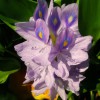 Waterhyacinth is one of the world’s worst aquatic weeds and is Florida’s most intensively managed floating plant. Dense mats formed by this species interfere with human uses of water bodies and disrupt ecosystems by preventing penetration of light and oxygen into the water column. This attractive, free-floating aquatic plant grows throughout the year in southern Florida but often dies back during the winter in the northern parts of the state. Waterhyacinth is cultivated as a water garden and pond plant, but cultivation, sale, and possession of this noxious weed is prohibited in Florida. This 5-page fact sheet was written by Lyn A. Gettys, and published by the UF Department of Agronomy, September 2014.
Waterhyacinth is one of the world’s worst aquatic weeds and is Florida’s most intensively managed floating plant. Dense mats formed by this species interfere with human uses of water bodies and disrupt ecosystems by preventing penetration of light and oxygen into the water column. This attractive, free-floating aquatic plant grows throughout the year in southern Florida but often dies back during the winter in the northern parts of the state. Waterhyacinth is cultivated as a water garden and pond plant, but cultivation, sale, and possession of this noxious weed is prohibited in Florida. This 5-page fact sheet was written by Lyn A. Gettys, and published by the UF Department of Agronomy, September 2014.
http://edis.ifas.ufl.edu/ag385
Category: Ecosystems & Species
Facts about Wildlife Diseases: Pseudorabies
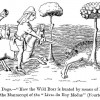 Pseudorabies primarily affects swine, but cattle, sheep and other mammals are susceptible to infection. Humans are not at risk. The superficial symptoms of this viral disease resemble rabies symptoms, thus the name pseudorabies. Although eliminated in commercial animals, feral swine populations in the United States continue to circulate the disease and provide a reservoir for outbreaks. Texas, Oklahoma, Florida, and Hawaii all have dense populations of feral swine with a high prevalence of pseudorabies. Feral swine, therefore, pose a serious risk to commercial swine operations, livestock, companion animals, and wildlife. This 4-page fact sheet was written by Samantha Wisely, and published by the UF Department of Wildlife Ecology and Conservation, August 2014.
Pseudorabies primarily affects swine, but cattle, sheep and other mammals are susceptible to infection. Humans are not at risk. The superficial symptoms of this viral disease resemble rabies symptoms, thus the name pseudorabies. Although eliminated in commercial animals, feral swine populations in the United States continue to circulate the disease and provide a reservoir for outbreaks. Texas, Oklahoma, Florida, and Hawaii all have dense populations of feral swine with a high prevalence of pseudorabies. Feral swine, therefore, pose a serious risk to commercial swine operations, livestock, companion animals, and wildlife. This 4-page fact sheet was written by Samantha Wisely, and published by the UF Department of Wildlife Ecology and Conservation, August 2014.
http://edis.ifas.ufl.edu/uw388
Pavement ant Tetramorium caespitum (Linnaeus) (Insecta: Hymenoptera: Formicidae)
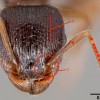 The pavement ant is one of the most commonly encountered ants in the United States. Since first introduced from Europe at the beginning of the nineteenth century, the ant has become well established and is prevalent in urban areas in the northern U.S. and parts of Canada. However, the extent of their invasiveness and severity as a pest is not well characterized. This 5-page fact sheet was written by Tyler Vitone and Andrea Lucky, and published by the UF Department of Entomology and Nematology, September 2014.
The pavement ant is one of the most commonly encountered ants in the United States. Since first introduced from Europe at the beginning of the nineteenth century, the ant has become well established and is prevalent in urban areas in the northern U.S. and parts of Canada. However, the extent of their invasiveness and severity as a pest is not well characterized. This 5-page fact sheet was written by Tyler Vitone and Andrea Lucky, and published by the UF Department of Entomology and Nematology, September 2014.
http://edis.ifas.ufl.edu/in1047
A Parasitoid Wasp Cotesia congregata (Say) (Insecta: Hymenoptera: Braconidae
 This species of Cotesia has been widely used as a model system in insect physiology. It has also been used to examine insect learning in host-parasitoid-plant interactions. It is an important natural enemy of the tobacco hornworm, a detrimental pest species that feeds on many plants in the Solanaceae (tobacco, pepper, tomato, etc.) family. This 5-page fact sheet was written by Christopher D. Crockett, Andrea Lucky, Oscar E. Liburd, and Karen M. Kester, and published by the UF Department of Entomology and Nematology, July 2014.
This species of Cotesia has been widely used as a model system in insect physiology. It has also been used to examine insect learning in host-parasitoid-plant interactions. It is an important natural enemy of the tobacco hornworm, a detrimental pest species that feeds on many plants in the Solanaceae (tobacco, pepper, tomato, etc.) family. This 5-page fact sheet was written by Christopher D. Crockett, Andrea Lucky, Oscar E. Liburd, and Karen M. Kester, and published by the UF Department of Entomology and Nematology, July 2014.
http://edis.ifas.ufl.edu/in1042
A guide to Florida's common bark and ambrosia beetles
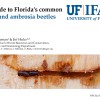 This 36-page guide provides an introduction to the biology and identification of Florida’s bark and ambrosia beetles. Written by Craig Bateman and Jiri Hulcr, and published by the UF Department of School of Forest Resources and Conservation, September 2014.
This 36-page guide provides an introduction to the biology and identification of Florida’s bark and ambrosia beetles. Written by Craig Bateman and Jiri Hulcr, and published by the UF Department of School of Forest Resources and Conservation, September 2014.
http://edis.ifas.ufl.edu/fr389
Alligator Abundance and Hydrology (2003–2013): What Long-term Monitoring Can Tell Us about Everglades Restoration
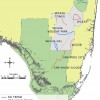 The American alligator is a powerful indicator for Everglades restoration. It responds clearly to environmental change and is easy and inexpensive to monitor. As top predators and ecological “engineers,” alligators affect nearly all aquatic life in the ecosystem. Thus, trends in alligator populations can tell us whether restoration projects are successful. Alligators may be monitored for both short-term responses (body condition) and longer-term responses to ecosystem change (abundance). This 3-page fact sheet discusses trends in alligator abundance. It was written by Rebecca G. Harvey, Jeff Beauchamp, Robin Bijlani, Frank J. Mazzotti, and Laura A. Brandt, and published by the UF Department of Wildlife Ecology and Conservation, July 2014.
The American alligator is a powerful indicator for Everglades restoration. It responds clearly to environmental change and is easy and inexpensive to monitor. As top predators and ecological “engineers,” alligators affect nearly all aquatic life in the ecosystem. Thus, trends in alligator populations can tell us whether restoration projects are successful. Alligators may be monitored for both short-term responses (body condition) and longer-term responses to ecosystem change (abundance). This 3-page fact sheet discusses trends in alligator abundance. It was written by Rebecca G. Harvey, Jeff Beauchamp, Robin Bijlani, Frank J. Mazzotti, and Laura A. Brandt, and published by the UF Department of Wildlife Ecology and Conservation, July 2014.
http://edis.ifas.ufl.edu/uw387
Florida Forest Landowner Preferences for Carbon Offset Program Characteristics
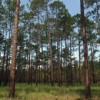 This 7-page fact sheet explains how carbon-offset programs operate and examines their benefits to landowners and the environment, especially in Florida and the southeast US. A summary of a recent study of Florida forest landowners is used to better reveal views on forest carbon-offset programs and their willingness-to-accept monetary compensation for their enrollment in such programs. Written by José R. Soto, Damian C. Adams, and Francisco J. Escobedo, and published by the UF Department of School of Forest Resources and Conservation, July 2014.
This 7-page fact sheet explains how carbon-offset programs operate and examines their benefits to landowners and the environment, especially in Florida and the southeast US. A summary of a recent study of Florida forest landowners is used to better reveal views on forest carbon-offset programs and their willingness-to-accept monetary compensation for their enrollment in such programs. Written by José R. Soto, Damian C. Adams, and Francisco J. Escobedo, and published by the UF Department of School of Forest Resources and Conservation, July 2014.
http://edis.ifas.ufl.edu/fr388
Giant Woolly Bear (larva), Giant or Great Leopard Moth (adult) Hypercompe scribonia (Stoll 1790) (Lepidoptera: Erebidae: Arctiinae)
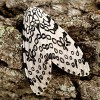 The giant leopard moth is our largest eastern tiger moth. It was formerly in the family Arctiidae, which now composes the subfamily Arctiinae in the family Erebidae. Giant leopard moths are nocturnal. Males are commonly attracted to lights at night. Sometimes dozens of males come to bright lights set out in good habitat. This 6-page fact sheet was written by Donald W. Hall, and published by the UF Department of Entomology and Nematology, August 2014.
The giant leopard moth is our largest eastern tiger moth. It was formerly in the family Arctiidae, which now composes the subfamily Arctiinae in the family Erebidae. Giant leopard moths are nocturnal. Males are commonly attracted to lights at night. Sometimes dozens of males come to bright lights set out in good habitat. This 6-page fact sheet was written by Donald W. Hall, and published by the UF Department of Entomology and Nematology, August 2014.
http://edis.ifas.ufl.edu/in1043
Hydrellia fly parasitic wasp Trichopria columbiana Ashmead (Insecta: Hymenoptera: Diapriidae)
 Trichopria columbiana is a parasitoid of Hydrellia fly species. Depending on the ecological role of the host species, it can have a positive or negative effect on biological control. Some Hydrellia species feed on the invasive aquatic weed hydrilla. After its introduction into the U.S. by the aquarium industry in the 1950s (Langeland 1996), various control methods, including biological control, were developed and used to manage infestations. Classical biological control studies were initiated in the 1970s, which led to the release of four insects in the U.S., two of which were the leaf-mining ephydrid flies, Hydrellia pakistanae and Hydrellia balciunasi. Despite successful establishment and range expansion of the Asian hydrilla leaf mining fly, Hydrellia pakistanae, population levels of the insect and associated plant damage have remained low. One of the potentially limiting biotic factors is parasitism by the native endoparasitic wasp Trichopria columbiana. This 6-page fact sheet was written by Byron R. Coon, Nathan E. Harms, Michael J. Grodowitz, Emma N.I. Weeks, and James P. Cuda, and published by the UF Department of Entomology and Nematology, June 2014.
Trichopria columbiana is a parasitoid of Hydrellia fly species. Depending on the ecological role of the host species, it can have a positive or negative effect on biological control. Some Hydrellia species feed on the invasive aquatic weed hydrilla. After its introduction into the U.S. by the aquarium industry in the 1950s (Langeland 1996), various control methods, including biological control, were developed and used to manage infestations. Classical biological control studies were initiated in the 1970s, which led to the release of four insects in the U.S., two of which were the leaf-mining ephydrid flies, Hydrellia pakistanae and Hydrellia balciunasi. Despite successful establishment and range expansion of the Asian hydrilla leaf mining fly, Hydrellia pakistanae, population levels of the insect and associated plant damage have remained low. One of the potentially limiting biotic factors is parasitism by the native endoparasitic wasp Trichopria columbiana. This 6-page fact sheet was written by Byron R. Coon, Nathan E. Harms, Michael J. Grodowitz, Emma N.I. Weeks, and James P. Cuda, and published by the UF Department of Entomology and Nematology, June 2014.
http://edis.ifas.ufl.edu/in1040
Hydrilla tuber weevil Bagous affinis Hustache (Insecta: Coleoptera: Curculionidae)
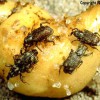 Bagous affinis Hustache is a semi-aquatic weevil that feeds on the aquatic invasive plant Hydrilla verticillata (L.f.) Royle. The larvae of the weevil mine hydrilla tubers, and the adults feed on the submerged stems and leaves. The weevil was discovered during surveys for biological control agents for hydrilla in Pakistan in 1980 and was first introduced to the U.S. in Florida from India in 1987. This 5-page fact sheet was written by Emma Weeks, and published by the UF Department of Entomology and Nematology, June 2014.
Bagous affinis Hustache is a semi-aquatic weevil that feeds on the aquatic invasive plant Hydrilla verticillata (L.f.) Royle. The larvae of the weevil mine hydrilla tubers, and the adults feed on the submerged stems and leaves. The weevil was discovered during surveys for biological control agents for hydrilla in Pakistan in 1980 and was first introduced to the U.S. in Florida from India in 1987. This 5-page fact sheet was written by Emma Weeks, and published by the UF Department of Entomology and Nematology, June 2014.
http://edis.ifas.ufl.edu/in1039
Grass Carp, the White Amur: Ctenopharyngodon idella Cuvier and Valenciennes (Actinopterygii: Cyprinidae: Squaliobarbinae)
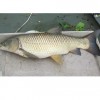 The grass carp, Ctenopharyngodon idella Cuvier and Valenciennes, was imported to the U.S. in 1963 as a biological control agent for hydrilla (Hydrilla verticilliata (L.f.) Royle) and other aquatic plants. Concerns of escape and reproduction, and the potential impacts that colonization of the fish could have on native flora and fauna led to research that developed a non-reproductive fish, which was equally effective in controlling hydrilla. In the warm waters of Florida, with abundant food, grass carp grow quickly at around 2 lbs/month or 0.91 kg/month and may achieve weights of 97 lbs (44 kg). Younger fish and female fish grow faster than older or male fish. Grass carp are the most effective biological control tool that has been identified for hydrilla. This 7-page fact sheet was written by Emma N.I. Weeks and Jeffrey E. Hill, and published by the UF Department of Entomology and Nematology, June 2014.
The grass carp, Ctenopharyngodon idella Cuvier and Valenciennes, was imported to the U.S. in 1963 as a biological control agent for hydrilla (Hydrilla verticilliata (L.f.) Royle) and other aquatic plants. Concerns of escape and reproduction, and the potential impacts that colonization of the fish could have on native flora and fauna led to research that developed a non-reproductive fish, which was equally effective in controlling hydrilla. In the warm waters of Florida, with abundant food, grass carp grow quickly at around 2 lbs/month or 0.91 kg/month and may achieve weights of 97 lbs (44 kg). Younger fish and female fish grow faster than older or male fish. Grass carp are the most effective biological control tool that has been identified for hydrilla. This 7-page fact sheet was written by Emma N.I. Weeks and Jeffrey E. Hill, and published by the UF Department of Entomology and Nematology, June 2014.
http://edis.ifas.ufl.edu/in1038
Hydrilla Stem Weevil Bagous Hydrillae O’Brien
 Bagous hydrillae O’Brien is a semi-aquatic weevil that feeds on the aquatic invasive weed Hydrilla verticillata (L.f.) Royle. Larvae of the weevil mine hydrilla stems and the adults feed on the stems and submerged leaves. This weevil was discovered during overseas surveys for biological control agents for hydrilla during the 1980s and was first introduced to the U.S. in Florida in 1991 after extensive host-specificity testing. This 5-page fact sheet was written by Emma Weeks, Jim Cuda, and Michael J. Grodowitz, and published by the UF Department of Entomology and Nematology, June 2014.
Bagous hydrillae O’Brien is a semi-aquatic weevil that feeds on the aquatic invasive weed Hydrilla verticillata (L.f.) Royle. Larvae of the weevil mine hydrilla stems and the adults feed on the stems and submerged leaves. This weevil was discovered during overseas surveys for biological control agents for hydrilla during the 1980s and was first introduced to the U.S. in Florida in 1991 after extensive host-specificity testing. This 5-page fact sheet was written by Emma Weeks, Jim Cuda, and Michael J. Grodowitz, and published by the UF Department of Entomology and Nematology, June 2014.
http://edis.ifas.ufl.edu/in1036
Hydrilla leaf mining flies (unofficial common name) Hydrellia spp. (Insecta: Diptera: Ephydridae)
http://edis.ifas.ufl.edu/in1034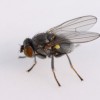 Several native and introduced species of flies in the genus Hydrellia are important because they feed on hydrilla (Hydrilla verticillata L.f. Royle), an invasive aquatic plant that has been classified as a Federal Noxious Weed. Hydrilla has invaded aquatic ecosystems in Florida and across the U.S. Larvae of Hydrellia spp. mine the leaves of hydrilla. In Florida, there are four species that have been associated with the invasive aquatic weed hydrilla: two native species and two species that were introduced for biological control of hydrilla. The native species are Hydrellia bilobifera Cresson and Hydrellia discursa Deonier. The introduced species are Hydrellia pakistanae Deonier and Hydrellia balciunasi Bock. This 6-page fact sheet was written by Emma Weeks and James Cuda, and published by the UF Department of Entomology and Nematology, April 2014.
Several native and introduced species of flies in the genus Hydrellia are important because they feed on hydrilla (Hydrilla verticillata L.f. Royle), an invasive aquatic plant that has been classified as a Federal Noxious Weed. Hydrilla has invaded aquatic ecosystems in Florida and across the U.S. Larvae of Hydrellia spp. mine the leaves of hydrilla. In Florida, there are four species that have been associated with the invasive aquatic weed hydrilla: two native species and two species that were introduced for biological control of hydrilla. The native species are Hydrellia bilobifera Cresson and Hydrellia discursa Deonier. The introduced species are Hydrellia pakistanae Deonier and Hydrellia balciunasi Bock. This 6-page fact sheet was written by Emma Weeks and James Cuda, and published by the UF Department of Entomology and Nematology, April 2014.
Hydrilla Integrated Management
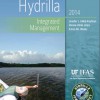 The focus of the book is on hydrilla management in Florida, although the described tactics are known and used in many of the 28 states in the United States with hydrilla infestations. Divided in seven chapters, the book guides the reader through a general introduction to the problems associated with hydrilla; identification of the plant; instructions for early detection of infestations including federal and state laws and regulations; detailed descriptions of available control tactics; proposals for integrated management plans; descriptions of insects and fish associated with hydrilla; and supplementary information including contacts for assistance when readers encounter infestations. This 144-page book was written by Jennifer L. Gillett-Kaufman, Verena-Ulrike Lietze, and Emma N.I. Weeks, and published by the UF Department of Entomology and Nematology, August 2014.
The focus of the book is on hydrilla management in Florida, although the described tactics are known and used in many of the 28 states in the United States with hydrilla infestations. Divided in seven chapters, the book guides the reader through a general introduction to the problems associated with hydrilla; identification of the plant; instructions for early detection of infestations including federal and state laws and regulations; detailed descriptions of available control tactics; proposals for integrated management plans; descriptions of insects and fish associated with hydrilla; and supplementary information including contacts for assistance when readers encounter infestations. This 144-page book was written by Jennifer L. Gillett-Kaufman, Verena-Ulrike Lietze, and Emma N.I. Weeks, and published by the UF Department of Entomology and Nematology, August 2014.
http://edis.ifas.ufl.edu/in1044
Convergent Lady Beetle Hippodamia convergens Guérin-Méneville (Insecta: Coleoptera: Coccinellidae)
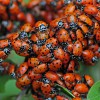 The convergent lady beetle, Hippodamia convergens Guérin-Méneville, is among the most common lady beetle species throughout North America and is an important natural enemy of aphids, scales, thrips, and other soft-bodied insects. It will also feed on pollen and nectar from flowers when prey is scarce. This species can be found in habitats ranging from grasslands, forests, agricultural fields, gardens, and natural parks. It is one of the few natural enemies that are currently wild-collected from mass aggregations for distribution to the pest control industry. This 5-page fact sheet was written by Luis F. Aristizábal and Steven P. Arthurs, and published by the UF Department of Entomology and Nematology, June 2014.
The convergent lady beetle, Hippodamia convergens Guérin-Méneville, is among the most common lady beetle species throughout North America and is an important natural enemy of aphids, scales, thrips, and other soft-bodied insects. It will also feed on pollen and nectar from flowers when prey is scarce. This species can be found in habitats ranging from grasslands, forests, agricultural fields, gardens, and natural parks. It is one of the few natural enemies that are currently wild-collected from mass aggregations for distribution to the pest control industry. This 5-page fact sheet was written by Luis F. Aristizábal and Steven P. Arthurs, and published by the UF Department of Entomology and Nematology, June 2014.
http://edis.ifas.ufl.edu/in1037
Black salt marsh mosquito Aedes taeniorhynchus (Wiedemann) (Insecta: Diptera: Culicidae)
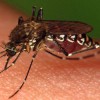 The black salt marsh mosquito is very common in the eastern coastal areas of the Americas, and is responsible for a large part of mosquito insecticide applications in Florida. Although it is not a primary vector of major concern, it can transmit pathogens to humans and other animals. Its characteristic emergence in large numbers after rains and flooding events as well as its aggressive biting contribute to its notoriety as a pest insect. The black salt marsh mosquito is considered a nuisance in Florida. It is sheltered from large-scale mosquito control as part of the Everglades National Park conservation program to preserve their delicate ecosystem. This 7-page fact sheet was written by Natasha Marie Agramonte and C. Roxanne Connelly, and published by the UF Department of Entomology and Nematology, April 2014.
The black salt marsh mosquito is very common in the eastern coastal areas of the Americas, and is responsible for a large part of mosquito insecticide applications in Florida. Although it is not a primary vector of major concern, it can transmit pathogens to humans and other animals. Its characteristic emergence in large numbers after rains and flooding events as well as its aggressive biting contribute to its notoriety as a pest insect. The black salt marsh mosquito is considered a nuisance in Florida. It is sheltered from large-scale mosquito control as part of the Everglades National Park conservation program to preserve their delicate ecosystem. This 7-page fact sheet was written by Natasha Marie Agramonte and C. Roxanne Connelly, and published by the UF Department of Entomology and Nematology, April 2014.
http://edis.ifas.ufl.edu/in1035
Insects: Friend or Foe? Color and Learn!
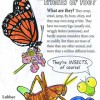 Not just a coloring book, but an interactive learning experience! This educational handout is perfect for classroom use, homeschool, or just a rainy (or snowy, if you are not in Florida) day. This activity will help connect kids and adults with the amazing diversity of animals for which we have articles in the UF/IFAS Featured Creatures database. This coloring book can be printed front to back on a standard 8.5 by 11 inch sheet of paper. Once you have your paper and coloring tools in hand, learn more about these creatures and decide what colors to use by reading more about them and visiting the web links for each insect. This 4-page fact sheet was written by Jennifer L. Gillett-Kaufman, and published by the UF Department of Entomology and Nematology, February 2014.
Not just a coloring book, but an interactive learning experience! This educational handout is perfect for classroom use, homeschool, or just a rainy (or snowy, if you are not in Florida) day. This activity will help connect kids and adults with the amazing diversity of animals for which we have articles in the UF/IFAS Featured Creatures database. This coloring book can be printed front to back on a standard 8.5 by 11 inch sheet of paper. Once you have your paper and coloring tools in hand, learn more about these creatures and decide what colors to use by reading more about them and visiting the web links for each insect. This 4-page fact sheet was written by Jennifer L. Gillett-Kaufman, and published by the UF Department of Entomology and Nematology, February 2014.
http://edis.ifas.ufl.edu/in1030
Rotala: A New Canal Invader in Southern Florida
 Rotala is a relative newcomer to Florida. Since it was first found in Coral Springs in 1996, it has established large, but mostly isolated, populations throughout the southern regions of Florida. It is especially problematic in Lee and Collier Counties and along the west coast. Extremely dense submersed populations and large thick mats dominate the surface of the water, greatly reducing ecosystem services, because oxygen level and light penetration are hampered. Because the rapid and vigorous growth of rotala inhibits water flow, the ability of infested canals to function properly in flood control systems is greatly hindered. Management of this aquatic weed is a major concern for resource managers. This 4-page fact sheet was written by Lyn A. Gettys and Carl J. Della Torre II, and published by the UF Department of Agronomy, April 2014.
Rotala is a relative newcomer to Florida. Since it was first found in Coral Springs in 1996, it has established large, but mostly isolated, populations throughout the southern regions of Florida. It is especially problematic in Lee and Collier Counties and along the west coast. Extremely dense submersed populations and large thick mats dominate the surface of the water, greatly reducing ecosystem services, because oxygen level and light penetration are hampered. Because the rapid and vigorous growth of rotala inhibits water flow, the ability of infested canals to function properly in flood control systems is greatly hindered. Management of this aquatic weed is a major concern for resource managers. This 4-page fact sheet was written by Lyn A. Gettys and Carl J. Della Torre II, and published by the UF Department of Agronomy, April 2014.
http://edis.ifas.ufl.edu/ag381
Aster leafminer moth Leucospilapteryx venustella (Clemens) (Insecta: Lepidoptera: Gracillariidae)
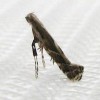 Leucospilapteryx venustella (Clemens) (Lepidoptera: Gracillariidae) is a small, mostly light brown moth that during its larval stages creates mines in the leaves of plants in the family Asteraceae. Feeding damage by the early instars is characterized by serpentine mines that are expanded by later instars to form tentiform or blotch mines. This 4-page fact sheet was written by Rodrigo Diaz, Esteban Tapia, Veronica Manrique, William Overholt, and Donald Davis, and published by the UF Department of Entomology and Nematology, February 2014.
Leucospilapteryx venustella (Clemens) (Lepidoptera: Gracillariidae) is a small, mostly light brown moth that during its larval stages creates mines in the leaves of plants in the family Asteraceae. Feeding damage by the early instars is characterized by serpentine mines that are expanded by later instars to form tentiform or blotch mines. This 4-page fact sheet was written by Rodrigo Diaz, Esteban Tapia, Veronica Manrique, William Overholt, and Donald Davis, and published by the UF Department of Entomology and Nematology, February 2014.
http://edis.ifas.ufl.edu/in1029
Minimizing Honey Bee Exposure to Pesticides
 Protecting honey bees and other pollinators from pesticide impacts is important to the sustainability of agriculture. Consequently, pesticide applicators must determine if there is a clear hazard to managed or wild populations of bees. Potential exposure of bees to pesticides can vary greatly depending on the type of pesticide, formulation, application method, label restrictions, and other factors. The goal in using a pesticide is to achieve maximum benefit (success) with minimum negative impact, and these factors should always be considered in pesticide selection. This publication is written (1) to help assure the sustainability of both bees and agriculture by informing beekeepers, pesticide users, and the general public about the often complex relationship between pollinators (specifically bees) and pesticides, (2) to offer guidance for improved communication between beekeepers and pesticide users, (3) to offer pollinator risk-reducing strategies for growers and other applicators when using pesticides, and (4) to provide clarity in laws, labeling, and associated definitions. This 14-page fact sheet was written by J. D. Ellis, J. Klopchin, E. Buss, F. M. Fishel, W. H. Kern, C. Mannion, E. McAvoy, L. S. Osborne, M. Rogers, M. Sanford, H. Smith, P. Stansly, L. Stelinski, and S. Webb, and published by the UF Department of Entomology and Nematology, March 2014.
Protecting honey bees and other pollinators from pesticide impacts is important to the sustainability of agriculture. Consequently, pesticide applicators must determine if there is a clear hazard to managed or wild populations of bees. Potential exposure of bees to pesticides can vary greatly depending on the type of pesticide, formulation, application method, label restrictions, and other factors. The goal in using a pesticide is to achieve maximum benefit (success) with minimum negative impact, and these factors should always be considered in pesticide selection. This publication is written (1) to help assure the sustainability of both bees and agriculture by informing beekeepers, pesticide users, and the general public about the often complex relationship between pollinators (specifically bees) and pesticides, (2) to offer guidance for improved communication between beekeepers and pesticide users, (3) to offer pollinator risk-reducing strategies for growers and other applicators when using pesticides, and (4) to provide clarity in laws, labeling, and associated definitions. This 14-page fact sheet was written by J. D. Ellis, J. Klopchin, E. Buss, F. M. Fishel, W. H. Kern, C. Mannion, E. McAvoy, L. S. Osborne, M. Rogers, M. Sanford, H. Smith, P. Stansly, L. Stelinski, and S. Webb, and published by the UF Department of Entomology and Nematology, March 2014.
http://edis.ifas.ufl.edu/in1027